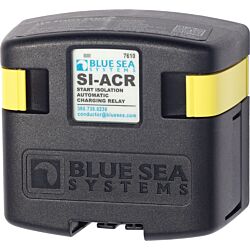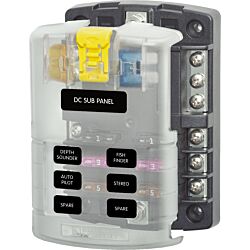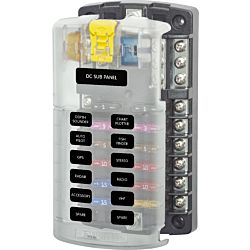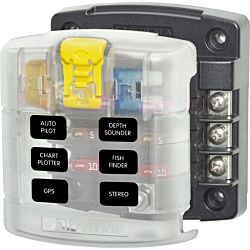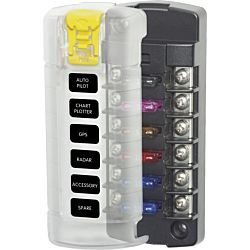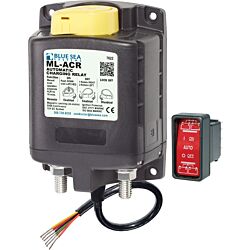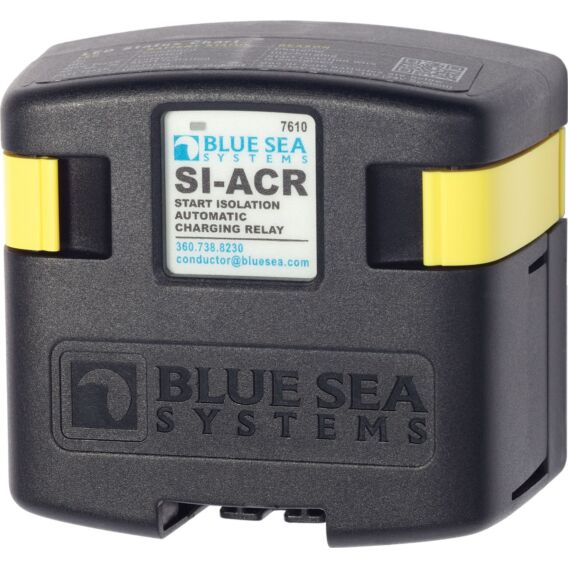
Automatically combines batteries during charging, isolates batteries when discharging and when starting engines
Features
- Protects sensitive electronics by temporary isolation of house loads from engine circuit during engine cranking
- Designed for 12 or 24 volt systems
- 12/24 volt auto-ranging voltage input
- Hermetically sealed contacts/vapor proof
- Ignition protected—safe for installation aboard gasoline powered boats
- Supports high-output alternators up to 120 Amperes
- Dual sensing
Optional Features
- Start Isolation allows temporary isolation of House loads from Engine circuit during engine cranking to protect sensitive electronics from sags and spikes
- Remote LED remotely indicates ACR states - requires optional LED
| Specifications | |
|---|---|
| Nominal Voltage | 12V DC 24V DC |
| Start Isolation* | Yes |
| Amperage Operating Current | 175mA (combined) 15mA (open) |
| Terminal Stud Torque | 140 in-lb (15.82 Nm) |
| Continuous Rating** | 120A |
| Intermittent Rating*** | 210A (5 min) |
| Cable Size to Meet Ratings | 1/0 AWG |
| Stud Material | Tinned Copper |
| Terminal Ring Diameter Clearance | 1.12in (28.45 mm) |
| Terminal Stud Length | 0.875in (22.23 mm) |
| Terminal Stud Size | 3/8" - 16 (M10) |
| Relay Contact Position | |
| Combine 30 sec | 13.6V @ 12 V 27.2V @ 24 V |
| Combine 90 sec | 13.0V @ 12 V 26.0V @ 24 V |
| Open 10 sec | 12.35V @ 12 V 24.7V @ 24 V |
| Open 30 sec | 12.75V @ 12 V 25.5V @ 24 V |
| Open High | 16.0V @ 12 V 30.0V @ 24 V |
| Over Voltage Lockout | 16.0V @ 12V 32.0V @ 24V |
| Under Voltage Lockout**** | 9.5V @ 12 V 19V @ 24 V |
| Weight | 1.25lb (0.57 kg) |
*Condition: Engine starting
- Relay is open isolating batteries
- Batteries are isolated to protect sensitive electronics from voltage sags and spikes
**The maximum current a switch is designed to conduct for an indefinite period.
***The maximum amount of current a switch is designed to carry for a minimum of a designated period of time.
****As a safety feature, some ACRs prevent combining into a severely discharge battery. A dual-sensing ACR will monitor the voltage on both batteries and will not connect if either battery is below the undervoltage lockout level. Use caution when combining into a battery with extremely low voltage, because this might represent a faulty battery or a problem elsewhere in the system.





